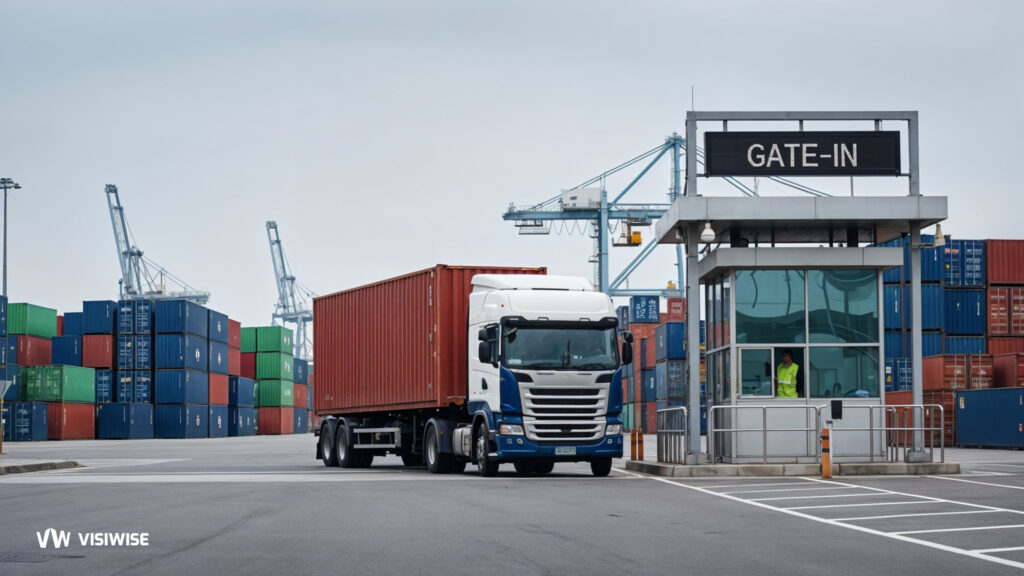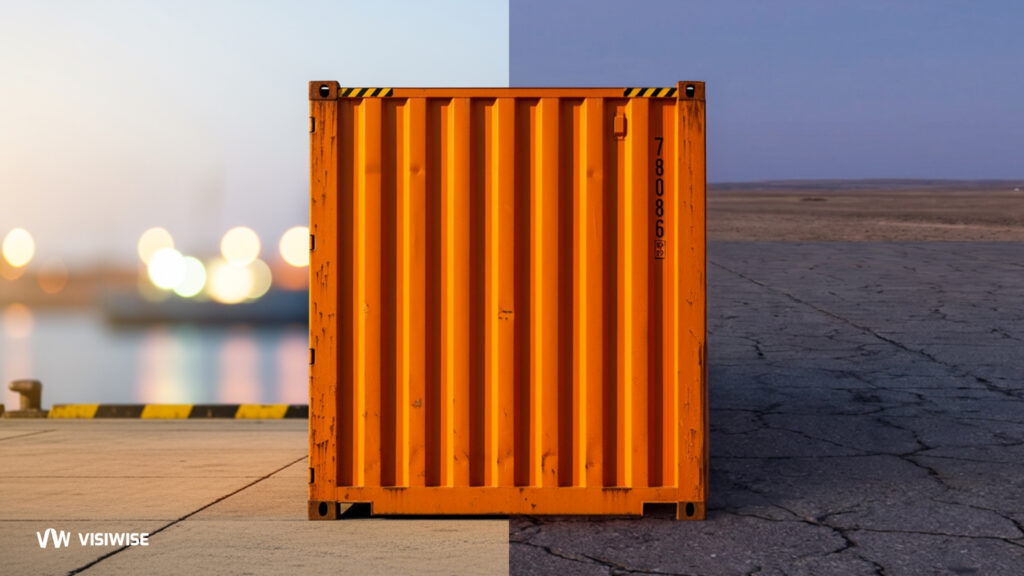In the dynamic world of logistics, understanding shipping and delivery statuses is crucial for both businesses and consumers. One term you may encounter during the tracking of your package is "Moving Through Network." While this phrase may seem vague, it simply indicates that your package is still in transit. The term "network" refers to the extensive USPS distribution hubs and sorting centers that your package passes through before arriving at your local post office. Essentially, it’s an umbrella term encompassing various status updates, including "In Transit", "Arrived at USPS Facility", "Departed USPS Facility", "Forwarded" and "Forwarded Processed." In this article, we’ll explore what moving through the network truly means, its significance in the shipping process, and how it affects the tracking and delivery of your packages.
What Does “Moving Through Network” Mean?
In a nutshell When you track a package with carriers like UPS, USPS, or FedEx, you might see the status "moving through network." This phrase indicates that your package is currently in transit and is being transported between different facilities within the carrier’s logistics system. It signifies that your package is not at a standstill; rather, it’s on the way to its final destination, making its way through various checkpoints along the route.
Understanding Key Shipping Status Updates
In the journey of your package through the USPS network, several status updates provide insight into its current location and movement. Here’s a closer look at each of these crucial stages:
- In Transit: This status indicates that your package is actively moving toward the next facility in the delivery chain. It may be traveling by truck, plane, or other means of transportation. During this phase, packages can be at different points along their route, so while it signifies progress, it does not specify the exact location of your package at any given moment.
- Arrived at USPS Facility: When your package reaches this status, it has successfully arrived at a USPS distribution or sorting facility. Here, it will be sorted based on its destination and prepared for the next leg of its journey. This stage is critical as it often involves scanning the package, allowing for tracking updates to reflect its new location within the USPS network.
- Departed USPS Facility: Once your package has been sorted and is ready to move on, it will receive the “Departed USPS Facility” status. This indicates that it has left the sorting center and is on its way to the next destination, which could be another USPS facility or directly to your local post office. This status gives reassurance that your package is one step closer to reaching you.
- Forwarded: If your package encounters a forwarding status, it means that it is being redirected to a new address. This often occurs when the recipient has submitted a change of address request with USPS. Forwarding can delay delivery, but it ensures that the package still reaches the intended recipient despite the address change.
- Forwarded Processed: This status indicates that the package has gone through the necessary processing steps to be forwarded to the new address. It is now en route to its updated destination, following the adjustments made in the USPS system. This status reassures the sender and recipient that the package is still moving through the network, albeit toward a different location than originally intended.
How Long Does It Take for a Package to Move Through the Network?
The time it takes for a package to move through the network can vary significantly based on several factors, including the selected shipping method (standard, expedited, overnight), the distance between the origin and destination, and the volume of packages the carrier is handling. Generally, for domestic shipments, packages may take anywhere from one to eight business days to reach their destination after leaving the initial facility.
Does ‘Moving Through Network’ Mean My Package Is Delayed?
Not necessarily. While the "Moving Through Network" status can sometimes suggest a delay, it typically reflects the normal transit process. During this phase, packages may spend time in various facilities as they are sorted and routed to their next destination. The status indicates that your package has been scanned and processed at the drop-off location and is currently navigating the expansive USPS system toward its final destination.
However, if your package remains in this status for an extended period without updates, it may warrant further investigation. Tracking updates will provide a clearer timeline for your package’s journey.
Why Has My Package Been Moving Through the Network for Days?
If your package has been stuck on "moving through network" for days, several factors could explain this:
- High Shipping Volume: Busy shipping seasons, like holidays or sales events, can lead to delays as carriers manage an influx of packages.
- Weather Conditions: Severe weather events, such as hurricanes, floods, or blizzards, can disrupt transport routes and slow down operations.
- Logistical Issues: Problems at sorting facilities, mechanical malfunctions, or vehicle breakdowns can impede package movement.
- Customs Delays: For international shipments, customs inspections can extend travel times and cause additional delays.
- Unexpected Network Volume: Sudden increases in package volume, particularly during peak seasons, can result in backlogs and delay processing.
While delays can be frustrating, patience and understanding are essential as your package navigates these occasional roadblocks. Thankfully, USPS tracking tools provide updates, and contacting customer service can offer further insight into your package’s specific situation.
When Should I Worry About a Package Stuck in Transit?
If your package has been in "moving through network" status for more than a few days, it’s reasonable to be concerned. Each carrier has different standards for what constitutes a significant delay, but typically if a package has not moved for over a week, it might be time to reach out to customer service for an update.
What to Do If Your Package Is Stuck?
If you suspect your package is stuck in transit, here are some steps you can take to address the situation:
- Check Tracking Information: Verify the tracking status for any recent updates.
- Contact Customer Service: Reach out to the carrier’s customer support for assistance. They can provide insights into your package’s location and any potential issues.
- Give It Time: Before taking further action, allow a few extra days after the anticipated delivery date, as there may be brief lags in the network.
- File a Claim: If your package is lost or damaged, consider filing a claim with the carrier for reimbursement.
- Use USPS Tracking Resources: The USPS website offers comprehensive information beyond just the “Moving Through Network” status, including the location of the most recent scan and possible causes of delay.
While being proactive can help ease the frustration of a delayed package, patience remains essential. By following these steps, you can effectively navigate the complexities of package transit and enhance your chances of a timely delivery.
Can a Package Be Delivered Without an Update?
Yes, it is possible for a package to be delivered without receiving an update in the tracking system. Sometimes, packages can be delivered while still showing as "moving through network." This can happen due to delays in updating the tracking information at various checkpoints.
Why Does Moving Through Network Take So Long with USPS?
USPS may take longer to move packages through their network due to several factors:
- Service Type: Certain USPS services (like First-Class or Media Mail) may have longer transit times compared to Priority Mail.
- Network Size: USPS has a vast network of facilities, and sorting can take time, especially during peak periods.
- Operational Challenges: Like other carriers, USPS can experience challenges such as staffing shortages, increased package volumes, or transportation disruptions.
Final remarks
In summary, understanding the "Moving Through Network" status is essential for anyone tracking a package through the USPS system. This term signifies that your package is actively in transit, navigating various sorting facilities and distribution hubs on its way to the final destination. While it may sometimes indicate delays, it typically reflects the normal logistics processes inherent in shipping. Factors such as high shipping volume, weather conditions, and logistical challenges can affect transit times, but utilizing tracking tools and resources can provide valuable insights into your package’s journey.
Being proactive and informed can help ease the frustration that comes with shipping delays. By checking tracking information, reaching out to customer service, and understanding the intricacies of the shipping process, you can better manage your expectations and navigate any issues that arise. Ultimately, while delays may occur, they are often temporary, and patience coupled with the right strategies will ensure that your package arrives safely and efficiently.



